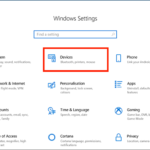Windows in general and Windows 10 in particular are often infamous for various issues like freezing, slow performance, malware infection, and more. However, by reinstalling Windows 10, you can resolve most of these issues. Do you want to know everything about how to reinstall Windows 10? Then continue reading this article to discover detailed information about reinstalling Windows 10 and the unmissable options.
When do you need to reinstall Windows 10?
There are several reasons why you might need to reinstall Windows 10 on your computer. If you didn’t know, Windows has various issues, and sometimes the only solution is to completely reinstall Windows 10. There are even cases where reinstalling will be very helpful, such as:
- Junk files
- Malware
- Operating system issues
- System errors
- Virus infection
- Performance problems
- Accidentally deleting important files
Now let’s take a closer look at each reason why you might need to reinstall Windows 10.
1. Performance problems
Typically, when your computer starts displaying performance issues such as slow or freezing, you should first try other solutions like deleting junk files, freeing up space on your computer, etc. However, if your computer continues to run slowly or freeze, reinstalling Windows 10 on your computer will solve the problem.
2. Malware
If your computer is infected with malware, viruses, or adware, reinstalling Windows 10 will remove them completely from your computer.
3. Junk files
When you download an application, the files of that application are stored in the Program Files or Windows folders. If you uninstall or delete the application, the junk files will not be completely removed. These files will accumulate over time and eventually slow down your computer.
You can delete junk files by clicking on the Start menu and then searching for the %temp% folder, but many junk files are stored on your boot drive. By reinstalling Windows 10, you will remove all junk files from your computer.
4. Accidentally deleting important Windows files
If you accidentally delete important Windows files or modify the registry, the system will not function properly. By reinstalling Windows 10, you can restore all these files and help your computer function normally.
Does reinstalling Windows 10 remove the license?
If your computer is using a genuine Windows 10 license and you’re worried whether reinstalling Windows 10 will remove the license, rest assured. By default, the License Key/Product Key of your genuine Windows is stored on your motherboard. Therefore, unless your motherboard is faulty, reinstalling Windows 10 will not remove your Windows license. In the worst-case scenario, you can still contact the entity that sold you the computer with the genuine Windows 10 license to request the License Key/Product Key information.
Note: If you have replaced your motherboard or accidentally activated Windows with a cheap license key purchased online, there is a high chance that you will lose the license when reinstalling Windows 10.
What to consider before reinstalling Windows 10?
Before reinstalling Windows 10 on your computer, there is one important thing you should do, which is to back up your data. You can back up your data using the built-in Windows backup solution, but you will need a USB drive. Alternatively, you can use specialized backup software to back up your computer and store the backups on the cloud or a USB drive.
Backing up your computer and uploading directly to a cloud storage service will save you the trouble of buying a USB drive and storing the data on it. Now that you know what to do before reinstalling Windows 10 on your computer, here are the things you need to do now:
How to reinstall Windows 10 while keeping personal files
1. Reinstall Windows 10 through the Settings app
If you want to keep all your personal files when reinstalling Windows 10, you can use the Settings app to do so. The advantage of using the Settings app is its user-friendly and easy-to-use graphical interface. The process of reinstalling Windows 10 and keeping personal files is as follows:
Step 1: The first thing you need to do is open the Settings app by pressing the Windows + I key combination or accessing the Start menu and clicking on the gear icon in the top left corner.
Step 2: In the displayed Settings app window, click on the Update & security option to proceed.
Step 3: In the left pane of the Settings app window, click on the Recovery option. Next, you’ll see Windows 10 displaying an option called Reset this PC, and below it, Microsoft provides an explanation “If your PC isn’t running well, resetting it might help. This lets you choose to keep your files or remove them, and then reinstalls Windows.” This is also our purpose, so click the Get started button just below to proceed.
/fptshop.com.vn/uploads/images/tin-tuc/169096/Originals/get-started.png)
Step 4: Next, Windows 10 will provide you with two options when reinstalling Windows 10, including:
- Keep my files: Choosing this option allows you to keep all your personal files. However, it will delete the installed apps, programs, and personalized settings. This option was previously known as Refresh your PC.
/fptshop.com.vn/uploads/images/tin-tuc/169096/Originals/keep-my-files.png)
- Remove everything: As the name suggests, this option will remove all personal files, apps, drivers, and personalized settings on your previous Windows 10. It will then perform a clean installation for Windows 10. If you want to delete all data and start using your computer from scratch, this reinstall Windows 10 option is a good choice.
Since your purpose is to keep personal files, click the Keep my files (Removes apps and settings, but keeps your personal files) option to proceed.
Step 5: Next, Windows 10 will provide you with two options to reinstall Windows 10, including:
- Cloud download: This option will download the latest version of Windows 10 from Microsoft’s servers and then use it to reinstall Windows 10.
- Local reinstall: It will use the compressed, locally stored Windows 10 files on your computer to reinstall Windows 10.
Click the option you want to use to proceed.
Step 6: After choosing the method to reinstall Windows 10, you will be taken to the Additional settings setup step. If you agree with your previous choice, click the Next button to proceed. If you want to change the selected settings, click the Change settings link and make a different selection.
/fptshop.com.vn/uploads/images/tin-tuc/169096/Originals/win10_reset-5.png)
Step 7: Windows 10 will then display a notification that it’s ready to start the Windows 10 reinstall process. Before proceeding, you may want to check the list of apps that will be removed from your computer by clicking on the View apps that will be removed link.
/fptshop.com.vn/uploads/images/tin-tuc/169096/Originals/win10_reset-6.png)
Step 8: If you’re sure that you want to reinstall Windows 10 while keeping your personal files, click the Reset button. Note that this is the final moment you can change your mind and cancel the reset process. Windows 10 will need another minute or two to prepare everything. When done, the system will automatically restart.
/fptshop.com.vn/uploads/images/tin-tuc/169096/Originals/win10_reset-8.png)
Step 9: Now sit back and let Windows 10 automatically perform the system reset setup. The speed of the Windows 10 reinstall process depends on the hardware of your computer. When the Windows 10 reinstall process is complete, you can sign in with your user account and start using your computer again.
2. Reinstall Windows 10 with the Windows Recovery Environment feature
You can also reinstall Windows 10 from the Windows Recovery Environment known as the Windows Recovery Environment before accessing the main screen. Here’s how to do it:
Step 1: Restart your computer. On the Windows 10 login screen, press and hold the key while clicking on the power icon, then select the Restart option at the bottom right of the screen.
/fptshop.com.vn/uploads/images/tin-tuc/169096/Originals/reset-windows-10-1.jpg)
Step 2: After your computer restarts and reaches the Choose an option screen, click on Troubleshoot.
/fptshop.com.vn/uploads/images/tin-tuc/169096/Originals/reset-windows-10-2.jpg)
Step 3: On the next screen, click on Reset this PC.
Step 4: Since you want to keep your personal files when reinstalling Windows 10, on this screen, click on Keep my files (Removes apps and settings, but keeps your personal files) to continue.
/fptshop.com.vn/uploads/images/tin-tuc/169096/Originals/reset-windows-10-3.jpg)
Step 5: Since you haven’t signed in to Windows yet, you need to authenticate with the system before continuing the Windows 10 reinstall process. Windows 10 will display a list of user accounts defined in the system. Select your user account name and log in.
Step 6: Next, you will be asked if you want to reinstall Windows 10 by downloading from the cloud (Cloud download) or by local reinstall (Local reinstall). Select the option you want to proceed with.
/fptshop.com.vn/uploads/images/tin-tuc/169096/Originals/reset-windows-10-6.jpg)
Step 7: Windows will then need a moment to prepare everything. When done, your computer running Windows 10 will notify you. If you’re still sure that you want to reinstall Windows 10, click the Reset button to confirm. However, note that this is the last moment you can change your mind and cancel the reinstall process, as there won’t be any opportunity to change it after that.
Step 8: Wait a few minutes for your Windows 10 computer to reset itself. Depending on the hardware power of your computer, this step can be fast or slow.
/fptshop.com.vn/uploads/images/tin-tuc/169096/Originals/reset-windows-10-5.jpg)
After a while, Windows 10 starts the self-setup installation. When the installation process is complete, you can log in with your user account.
How to reinstall Windows 10 and erase all data
1. Reinstall Windows 10 through the Settings app
When performing the reinstall process and erasing all files, it means that you will perform a clean reinstall of Windows 10. This means that all personal files, software, installed applications, and all settings that you made previously with Windows 10 will be wiped clean.
Also, reinstalling Windows 10 but erasing all files can be done through the Settings app, just like reinstalling Windows 10 but keeping personal files.
Step 1: Open the Settings app by pressing the Windows + I key combination or accessing the Start menu and clicking on the gear icon in the top left corner.
/fptshop.com.vn/uploads/images/tin-tuc/169096/Originals/win10_reset-10.png)
Step 2: In the displayed Settings app window, click on the Update & security option to proceed.
Step 3: In the left pane of the Settings app window, click on the Recovery option. Next, click the Get started button just below Reset this PC to proceed.
Step 4: On the next screen, Windows 10 will provide you with two options when reinstalling Windows 10:
- Keep my files: This option allows you to keep all your personal files. However, it will delete the apps, programs, and personalized settings that are installed. This option is useful when you want to refresh your PC.
/fptshop.com.vn/uploads/images/tin-tuc/169096/Originals/win10_reset-9.png)
- Remove everything: True to its name, this option will remove all personal files, apps, drivers, and personalized settings from your previous Windows 10. It will then perform a clean installation of Windows 10. If you want to start fresh with a completely new Windows 10 installation on your computer, this option is a good choice.
Since your purpose is to erase everything, click on Remove everything (Removes all of your personal files, apps, and settings) to proceed.
Step 5: On the next screen, Windows 10 will display a warning that removing everything when reinstalling Windows 10 will remove:
- All personal files and user accounts on your computer
- All apps and programs
- Any changes made to the settings
/fptshop.com.vn/uploads/images/tin-tuc/169096/Originals/win10_reset-13.png)
If you’re still sure you want to reinstall Windows 10 while erasing all files, click the Reset button. However, note that this is the final moment you can change your mind and cancel the reset process.
Step 6: Windows 10 will need a moment to prepare everything. When completed, your computer will automatically restart, and the reinstall process of Windows 10 to erase everything will be performed automatically.
Frequently Asked Questions about reinstalling Windows 10
1. Can I reinstall Windows 10 for free?
Yes, you can download and install Windows 10 for free, but be sure to confirm that you have a genuine Windows license. If you don’t have one and still proceed with the Windows 10 reinstall, you will see a watermark asking you to activate Windows after completion. Additionally, you won’t be able to use certain features until you activate your Windows.
2. Does reinstalling Windows 10 erase everything?
The answer is yes and no. When reinstalling Windows 10, you will be asked whether you want to delete everything, keep your files, or keep your files and apps. If you have a backup of your personal files, you can perform a clean reinstall of Windows 10. If not, you can choose to keep your files and apps or only keep your files.
3. Is resetting Windows better than reinstalling?
Both have their own purposes. But to put it simply, if you are experiencing a problem and resetting Windows doesn’t solve it, then you should consider reinstalling Windows 10.
4. Will I lose my data if I reinstall Windows 10?
If you only reinstall Windows 10, you won’t lose any personal files. However, if you upgraded to Windows 10 from a previous version, you may lose your data files.
Conclusion
Reinstalling Windows 10 is the last and unwanted solution to solve issues when encountering them. However, if it’s necessary to reinstall Windows 10 for giving, gifting, or selling your computer, then it is something you should do, and in this case, reinstalling Windows 10 and erasing everything is the best option. But if you’re reinstalling Windows 10 for your own use, choosing to keep personal files is the best option. So, which option do you choose for reinstalling Windows 10? Share with us!
Guide to Changing Mouse Pointer Icon on Windows 10
Discover the process to give your Windows 10 computer a personalized touch: learn how to change the mouse pointer icon! This article will show you the steps you need to take in order to customize your user experience.














